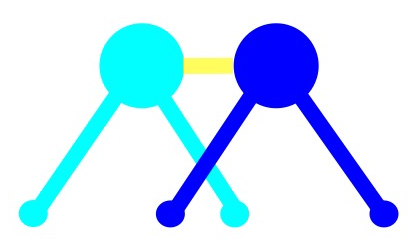The rich program of the Standardization Days, organized by AFNeT, in Paris, was an opportunity to share, in a lively atmosphere, recent advances on standards in the following domains:
- MBSE (Model-Based System Engineering),
- 3D visualization services,
- Digital twin,
- Integrated logistic support,
- Building and plant modeling,
- Long term archiving,
which are key topics for the success of the smart industry.
These days have highlighted the current momentum, the convergence of the initiatives, the sense of mutualization to benefit of the technological standards of the web.
Standardization is at the heart of digitalization and simplification projects.
Here are the 3 main lessons I draw from these Standardization Days:
For a standardization strategy integrated to the digital innovation projects
The relations between standardization and innovation are often questionned and the best strategy of standardization in the context of new technologies as well.
I think we need an integrated strategy for the standardization activities in the projects willing to take benefit of the new technologies available.
On one hand, standardization shall not limit to the potential of innovation by keeping the mindset of the previous technological framework and, on the other one, innovation needs standardization to reach an extended market.
Through Do-Tanks*, as promoted by AFNeT, shall be confirmed the benefit of the industrial internet. Collective intelligence and experimentation are the best ways to construct and tune standards fulfilling the industrial needs.
Web architecture principles, standards and technologies are the sources of solutions for industrial long standing issues
Web technological standards have been mentionned e.g. by Hadrien Szigeti (Dassault Systèmes), Thierry Chevalier (Airbus). Industry is not currently sufficiently aware of the potential and of the impact of the industrial internet. Standards, for their implementation, already use more and more, W3C standards e.g. XML, RDF, … and now more expressive languages as RDFS, OWL (Web Ontology Language).
I think these technological standards and their constructs shall be used from the beginning of a standardization approach in industry.
They benefit from main stream human, methodological and technical ressources, developped outside complex products industry ; they have already demonstrated their capabilities to fulfill industrial needs for the management and computation of huge volume of technical data.
This trend is aslo illustrated by the talk of Johannes Behr (Fraunhofer Institut), with 3D vizualisation services. These services based on Web 3D, allow stakeholders to visualize, in efficient conditions, a 3D mock-up according their interests.
Towards a modeling standard centered on systems
Industrials name ontologies to leverage the semantics of their data. Core models, as ISO15926-2, are claimed to be ontologies and use OWL for the data integration all along a process plant lifecycle.
I think this core models shall be revisionned and simplified. A high level neccessary and sufficient ontology, for complex products and production systems as well, compliant with requirements for top level ontologies, shall be based on the systems engineering methodology for many reasons, I could develop this critical point in next posts.
I sketched an approach in my presentation, during the track “Building Information Modeling (plant, AEC, Oil and Gas Equipment, …)”, How ISO 15926 series will contribute to an efficient support to new engineering practices and for the benefit of all the activities of the plant lifecycle.
I illustrated it with a high level ontology. The system is an object, which bears the properties, relations, properties representations and changes. From the design phase, the system is a concrete object, the knowledge of which extends at each event and changes during its lifecycle. Knowledge representation language like OWL, completed by compliant disciplines regional ontologies, support reasoning and checking the consistency of the data.
Very positive feeddbacks are already available on the indutrial use of reasoning capabilities of OWL to check the fulfilling of requirements by procured equipement for representative projects in Oil and Gas in Norway for instance.
The property based requirements methodology, developped by Patrice Micouin, and used in aeronautics is a similar approach as the one used in Norway for the digitalization of the NORSOK technical standards and its implementation using OWL shall be investigated by experimentation.
Presentations and discussions have strengthened my conviction that Model Based Systems Engineering and teh Web standards are the corresponding methodological and technological pillars of the digital transition towards the smart industry.
I will develop in future posts advances in that way forward.
Many thanks to the AFNeT team to have brought together French and international experts for a relevant program for the success of smart industry.
Slides of the presentations are available here.
* A Do-Tank is the association of collective intelligence with the strength of experimentation.

